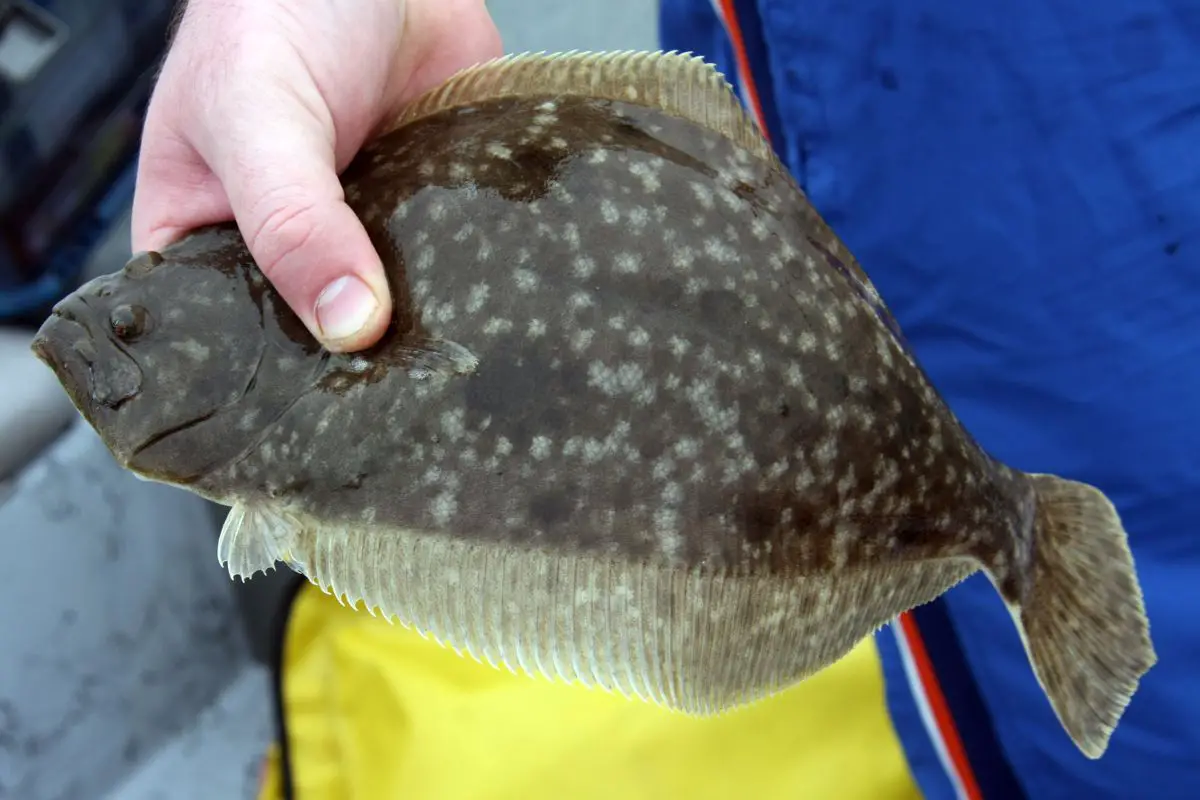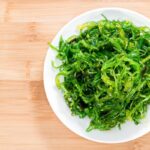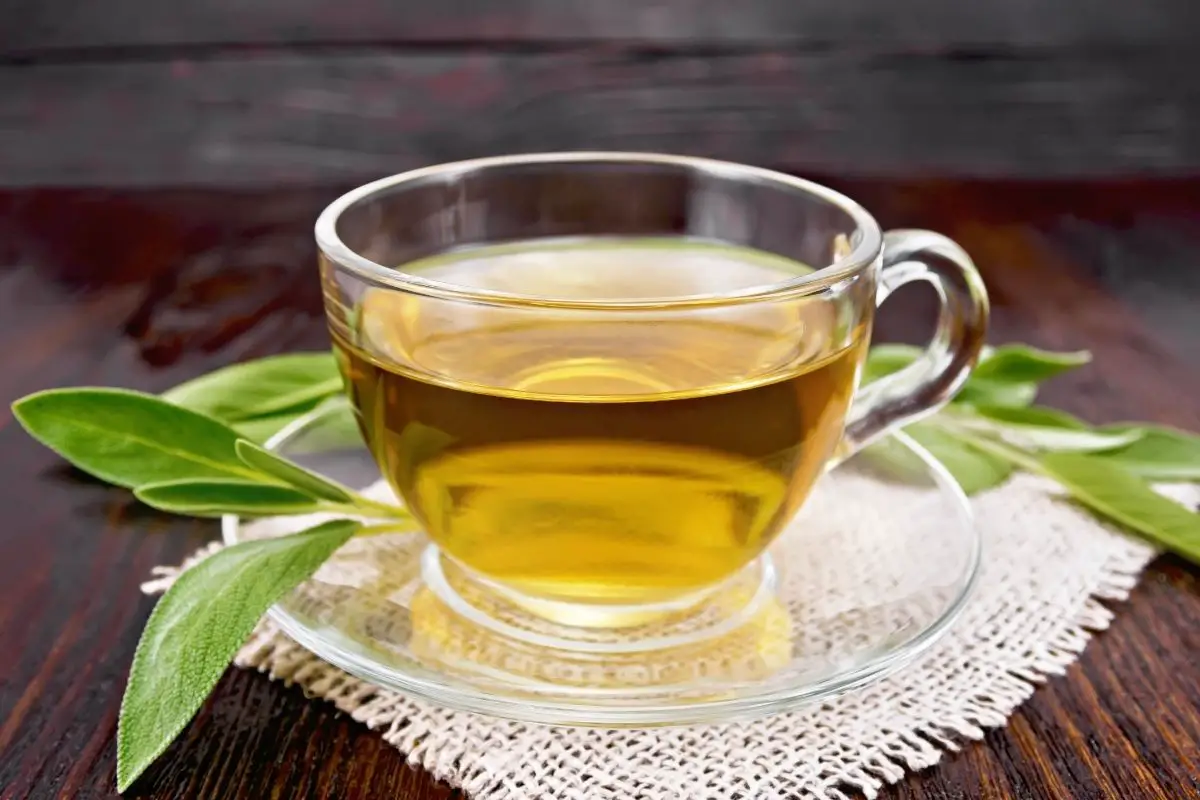If there is one food group that Hawaii knows how to cook, it is fish. Plucked straight from the ocean, the fish cuisine throughout Hawaii is fresh, flaky, and utterly delicious.
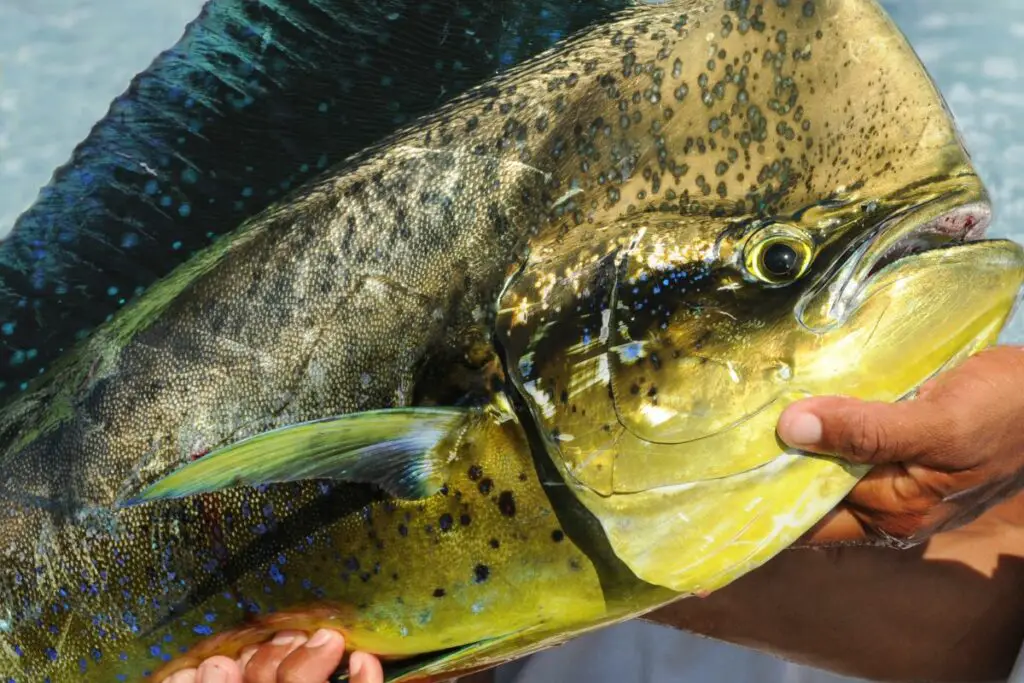
One fish that they cook to perfection is Mahi-mahi. This warm water fish comes with an abundance of flavor that is perfect for even the most inexperienced of chefs to cook.
It is also rich in nutrients and doesn’t fall apart as you cook. True perfection.
If you have never had the pleasure of tasting Mahi-mahi, or you are not a big fan of fish, you are truly missing out on something incredible.
In this article, we explain what Mahi-mahi tastes good and why you need to try it.
Let’s get into it!
What Is Mahi-Mahi?

The dolphinfish, often known as the dorado, is a warm-water fish that goes by the Hawaiian name mahi-mahi. It is a quick and simple fish to cook without disintegrating because it is a lean, firm whitefish with stiff, inedible skin that is normally left on.
Mahi-mahi is frequently grilled or baked and has a delicious flavor without being overly fishy. It is a fantastic choice for a number of flavors and foods thanks to its softer, semi-sweet flavor.
The Hawaiian name Mahi-Mahi means “strong-strong.” Due to its sparkling golden look, it is also known as dorado and the deceptive names dolphinfish and dolphin (despite having nothing whatsoever to do with the mammalian dolphin family).
However, if you enjoy eating fish, you can merely describe it as delectable. The flavor is light and a little bit sweet, and the meat is firm.
Pre-cut fresh or frozen steaks are increasingly prevalent, however, you can buy them whole to fillet at home.
The cost varies depending on the time of year (the majority of mahi-mahi are fished from summer to fall), but it is generally less expensive than halibut or swordfish.
Mahi-mahi has a rather short life span of around 5 years. However, it also grows and breeds extremely fast allowing it to take its place on the sustainability list.
How To Prepare Mahi-Mahi?
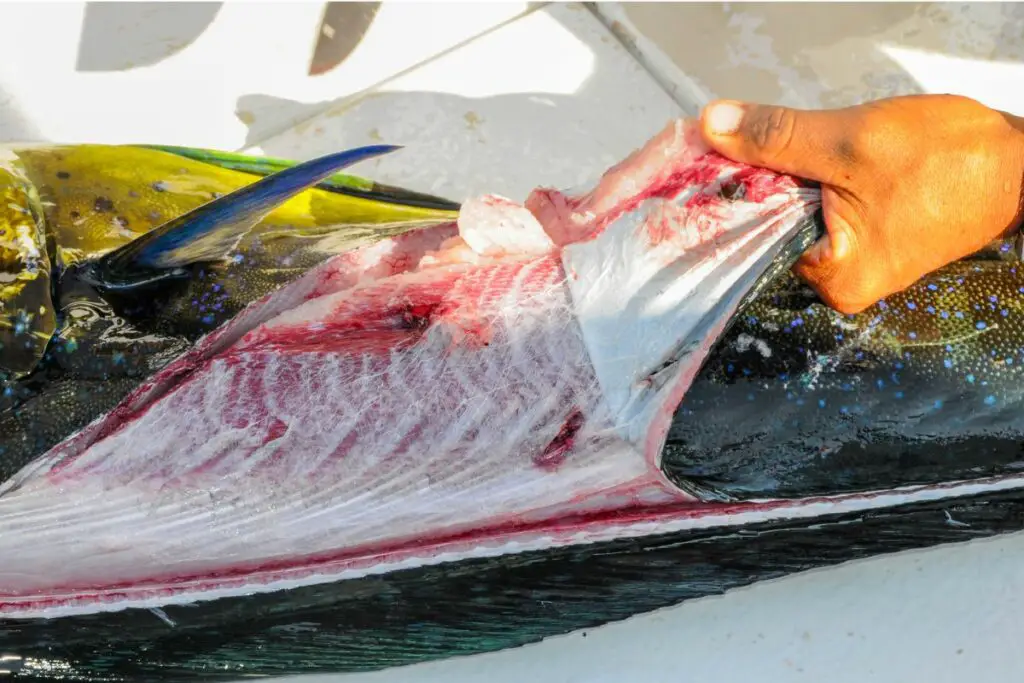
Mahi-mahi is a versatile fish that cooks beautifully with almost any technique. Just keep in mind that because it is a lean fish, you should be careful not to overcook it lest it dry out. It will only take three to four minutes per side, depending on thickness.
The skin should be removed before serving if you wish to grill the fillets because it is rather tough even after cooking and will help the fillets stick together better.
On a medium-high grill, cook the fish skin-side down, and then carefully flip them over. Use a flat grilling basket for skinless fillets.
The majority of mahi-mahi fillets will be bone-free, and any bones you do find are likely to be big and lengthy. Although they can be cut out, removing them after cooking is significantly simpler (and less harmful to the fillets).
One of the best ways to prepare mahi-mahi is with a glaze of chimichurri sauce. Broil, grill, fry, skewer, or steam your fish and then cut in into strips and cover it with a batter. You will be left with delicious, crispy tempura.
What Does Mahi-Mahi Taste Like?

Due to not being overfished commercially or recreationally, mahi-mahi is a readily available ingredient. However, this is not the only reason that it has become a hot commodity.
The flavor this fish produces is incredible and many crave it a few times a month. Mahi-mahi has pinkish meat with a firm texture, a pleasant flavor, and very little fat.
It’s one of the leanest fish variations, and you may use it in a variety of meals in place of other lean fish species.
Mahi-mahi has a natural pink color when raw and turns to an off-white color when cooked, leaving it with a rather meaty flavor. It is often described as stronger than halibut but milder than swordfish in terms of a fishy flavor.
Making it an excellent starting point for those looking to expand their flavor palettes. And with only 72 calories per 85 grams, it is an excellent source of protein for those looking to have a few more lean types of meat in their diets.
Fish can provide a lean protein, support healthy blood cells, improve heart health, and enhance brain function. It can somewhat strengthen the immune system as well.
Tips For Buying Mahi-Mahi

The best place to purchase mahi-mahi is at a seafood purveyor, however, if your supermarket only has frozen fish on offer, there are a few things to look out for. As:
- Skin: Instead of seeming dry and lifeless, the skin should be glossy and moist-looking. Silver to dark gray is the color ranges for skin, with little black specks and yellow or golden streaks.
- Color: Mahi-mahi has occasional bluish or light brown tinges and is pink with red stripes or dots. Avoid fish that is drab in color or has dark brown patches, especially along the margins, as this could be a sign of aging and the start of spoiling. Although trimming is recommended for a softer flavor before cooking, dark red streaks or spots are OK.
- Sustainability: Mahi-mahi caught by troll or rod & reel, particularly those from Hawaii and the U.S. Pacific Coast, are seen to be the most environmentally friendly options. Mahi-mahi that is caught with longlines is less preferable due to bycatch problems and is to be avoided.
- Smell: Never allow Mahi Mahi to smell fishy. Look for fillets or steaks that are firm, juicy, and have a fresh, nearly neutral flavor. If the Mahi-mahi on offer smells fishy, it is most likely off and should be removed from the shelf.
Frequently Asked Questions
Does Mahi-mahi Have A Lot Of Bones?
The majority of mahi-mahi fillets will be bone-free, and any bones you do find are likely to be big and lengthy. They can be chopped off, but removing them after cooking is simpler (and less harmful to fillets).
What Fish Can be Used Instead Of Mahi-Mahi?
Due to its rather neutral flavor, there are multiple fish that can provide a similar flavor to Mahi-mahi. The most common are halibut, swordfish, and catfish.
Why Is Mahi-Mahi So Popular?
Because they contain little mercury and other pollutants, mahi-mahi is a popular fish to eat. Although mahi-mahi is occasionally referred to as dolphinfish, they are not related to dolphins.
Their long beak, which resembles a dolphin’s, gave them the name “dolphinfish.” Fish like Mahi Mahi grow quickly.
Final Thoughts
If you often avoid fish dishes or are looking for something new to try, Mahi-mahi is the fish for you. With a pink flesh that turns to an off-white color, this fish is decedent and versatile.
You can create a range of dishes as this fish can be prepared in a multitude of ways and it is an excellent source of protein. With 18.5 grams of protein per 100 grams, Mahi-mahi is one of the leanest sources of meat.
Serve as crispy tempura, or grill with a squeeze of fresh lemon, either way Mahi-mahi is about to become your new favorite dish.
It is truly delicious!
Mahi-Mahi: What Does It Taste Like? How To Prepare It
Course: Taste Like4
servings30
minutes40
minutes300
kcalIngredients
Mahi-Mahi
Ingredients from your favorite recipes
Directions
- Depending on the ingredients used, the cooking method, and the type of dish, the taste of the food can vary greatly.
- Make sure to select a recipe that will elevate the food’s original flavor, and enjoy experimenting with different recipes!
- What Exactly Do Chickpeas Taste Like? Is There A Distinct Flavor? - September 30, 2023
- Top 11 Low Carb Options at Sonic Drive-In for Keto Diet - September 30, 2023
- What Should You Serve Alongside Potato Salad? 8 Incredible Side Dishes - September 30, 2023





